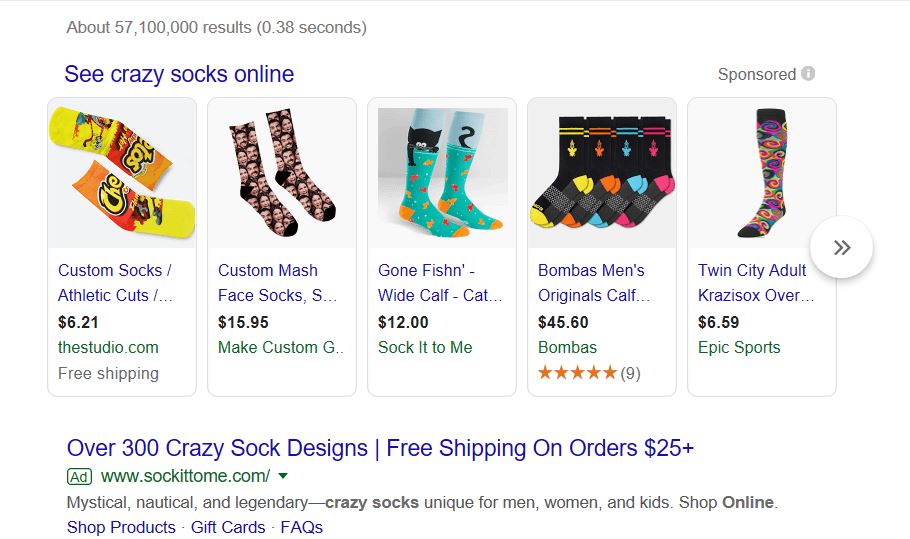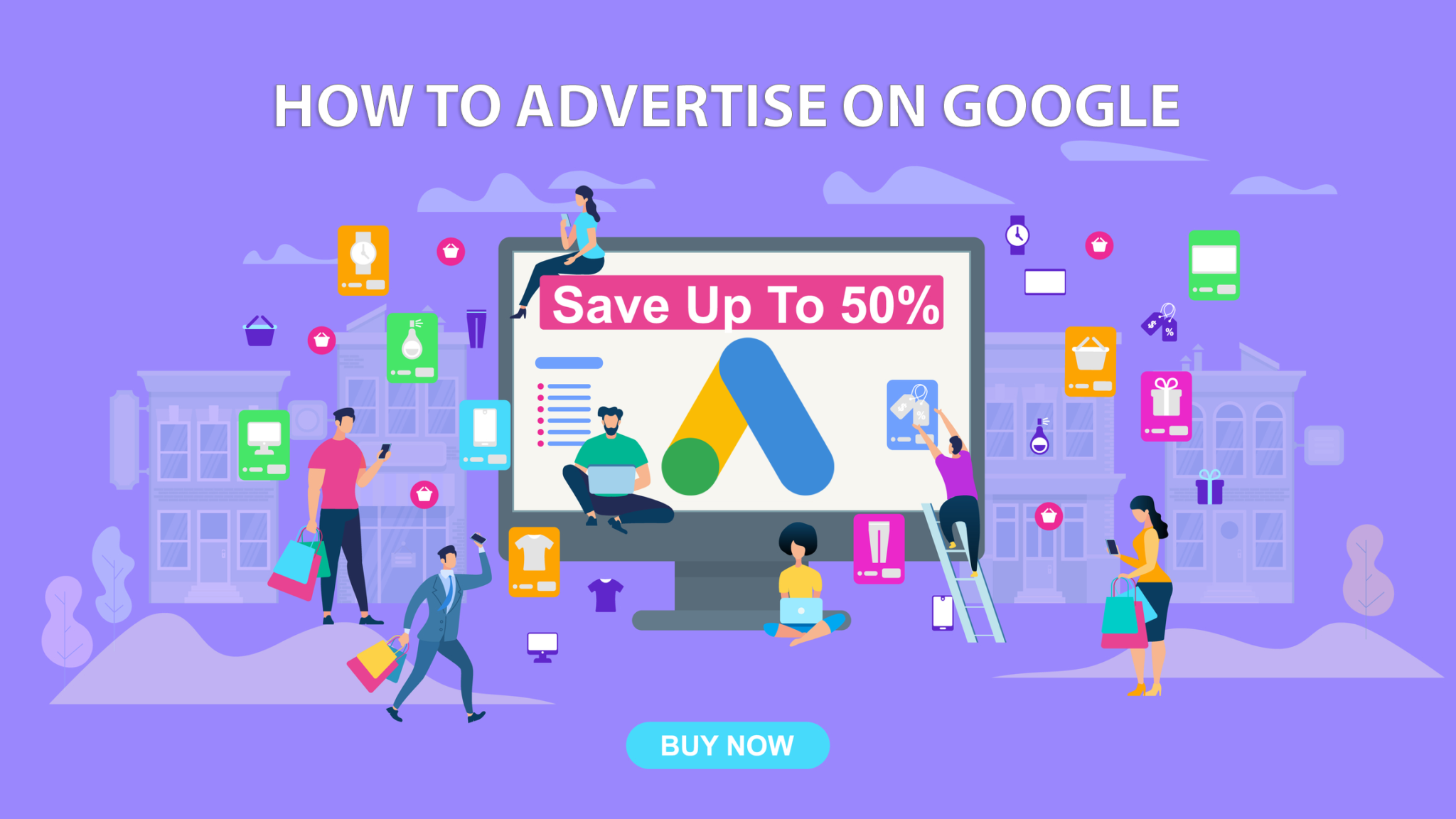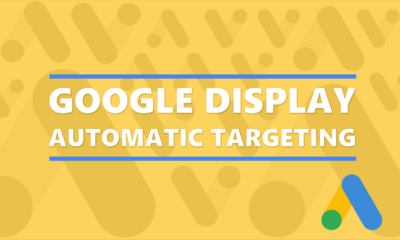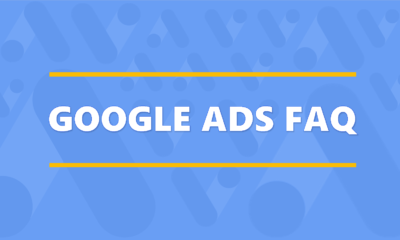How do you advertise on Google? Well, you need to start with getting a Google Ads (Formerly AdWords) account. It is through Google Ads that you can setup campaigns and ads that will show up in the Google search results pages.
Advertising on Google is a form pay per click advertising (PPC). If you are unfamiliar with this type of marketing then be sure to read our what is PPC article. With PPC, you pay Google every time someone clicks on your ad. You can also run ads on other websites through Google Ads. This is done through the Google Display Network.
If you are running an eCommerce store, then you might be interested in Google Shopping. Google Shopping is also managed within a Google Ads account. Here’s an example of what these shopping ads look like. I’m sure you’ve seen them before.

Is Advertising On Google Free?
The short answer is no. There are two ways to be found on Google – organically (non-paid) and paid (using Google Ads). Organic visibility on Google is not something you have complete control over. There is a whole industry that revovles around improving your organic search results. It’s called SEO and is beyond the scope of this article.
You can follow best practices and utilize tools like Google My Business, but ultimately even the highest ranking organic results will be positioned below Google Ads. Additionally, organic listings are really not a form of advertisement. Google Ads is Google’s advertising platform and it does cost money. Generally speaking, you pay when someone clicks on your ads.
5 Basic Steps To Advertise On Google
- Decide On Your Google Ads Budget
If you’re selling a product or service, how much are you willing to pay per result (for example, a click or a call). How frequently do these results lead to a sale, and how much of a margin are you making on your sales? All of this information will come in handy as you decide on your starting budget. Over time, you’ll get a better idea of how many clicks will lead to a conversion (which typically improves over time) and can adjust your budget accordingly.
If you’re stuck on how much to initially invest in, you could also use the Google Keyword Planner, which will give you an idea of a general cost per click of a keyword. You also can see how much search volume is available and how competitive the term is. For example, the average cost per click for a Search ad in the Consumer Services industry is $6.40, according to WordStream. - Sign Up For Google Ads
Visit “ads.google.com” to get started. You’ll be asked what your goal is, which may include more calls, more websites or more physical visits to your storefront. Next, you will be asked where you’d like to target your ads and what your main messaging will include. For example, if you’re a hair stylist in Phoenix, you’ll want to be specific about where in Phoenix you want your ads to be served. For messaging, you may want to mention your weekly specials or any professional certifications that your stylists may have.
An important note here is that when you first create your account, your sign-up path will default to Smart campaigns. These are for businesses with no experience in Google Ads, and many aspects of the campaigns are controlled for you through automation. If you have experience in Google Ads or if you want to have more control over your campaign creation, you will want to select “Experienced with Google Ads” to be taken to the full Google Ads management experience. - Launch Campaigns
Depending on whether you opt for Smart campaigns or traditional Google Ads campaigns, you will follow the prompts to finish setting up your first campaign. Your ads will be approved within 24 hours (usually within a few minutes) unless there are any issues. If your ad is disapproved, you will receive an email letting you know the reason. It’s important during the first couple of days to keep an eye on your campaign to ensure it’s running properly.
- Monitor & Optimize
Proper Google Ads management and optimization is key to your success. At least once a week, set aside 30 minutes to an hour to analyzed your results and make necessary changes to improve performance. Please note, that larger accounts can require alot more management time per week.
Even if you are running a Smart campaign, you’ll want to make sure you are getting the right results. If you are more hands-on with a traditional campaign, there are plenty of opportunities to optimize. Most importantly, you’ll want to see the search terms report and filter out any keywords coming in that are wasting your spend. For example, if you are a plumber who sells water heaters and your ads are serving for queries including “lowe’s”, you’ll want to make sure you’re blocking that traffic.
On a monthly basis, be sure you are reviewing your high level results and month-over-month performance. If the results are phone calls, for example, be sure that the amount you are paying per phone call is reasonable to you. To take this a step further, you may consider listening to calls to ensure that the leads you are getting are of good quality. Call tracking services like CallRail can be enlisted to help you with this capability. Likewise, if you are collecting lead forms, ensure that you are bringing in the right kind of customers. For example, if you are a house painter focused on a certain quadrant of your city, make sure your customers aren’t from other parts of the area.
In conclusion, setting up Google Ads does cost money, and the complexity of set-up will depend on whether you use a Smart campaign or a standard Google Ads campaign. While the former is the easier option, the latter provides you with more control which can be appealing when you want to make sure you are getting the most out of your spend.




